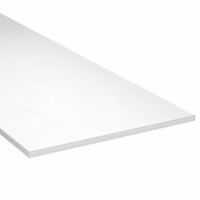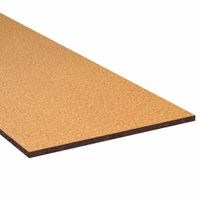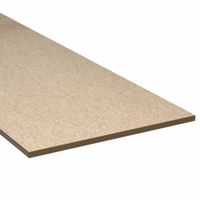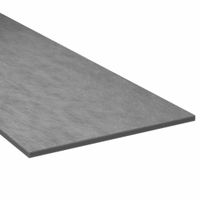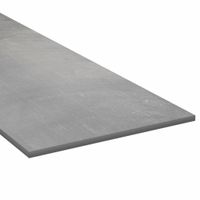Call +(254) 703 030 000 / 751 483 999 / 721 704 777
- Home
- Pipe Hose Tube Fittings
- Pipe Pipe Fittings
- Pipe Fitting Gaskets
- Gasket Sheets
.....Read More
Frequently Asked Questions
What are gasket sheets made of?
Gasket sheets are made from a variety of materials, each chosen for specific properties that suit different applications. Common materials include:
1. **Non-Asbestos Fiber (NAF):** These are made from synthetic fibers bonded with rubber, often used as a replacement for asbestos. They offer good heat resistance and chemical stability.
2. **Graphite:** Known for excellent thermal conductivity and chemical resistance, graphite gasket sheets are often used in high-temperature and high-pressure applications.
3. **PTFE (Polytetrafluoroethylene):** PTFE sheets are highly resistant to chemicals and have a low friction coefficient, making them suitable for applications involving aggressive chemicals.
4. **Rubber:** Various types of rubber, such as nitrile, EPDM, and neoprene, are used for their flexibility and resistance to oils, chemicals, and weathering.
5. **Cork:** Cork gasket sheets are often combined with rubber to enhance flexibility and compressibility, suitable for low-pressure applications.
6. **Metal:** Metal gasket sheets, such as those made from stainless steel or copper, are used in high-pressure and high-temperature environments due to their strength and durability.
7. **Mica:** Mica-based sheets are used for their excellent thermal and electrical insulation properties, often in electrical applications.
8. **Ceramic Fiber:** These sheets are used in extremely high-temperature applications due to their ability to withstand temperatures up to 1000°C or more.
9. **Compressed Fiber:** Made from a blend of fibers and fillers bonded with rubber, these sheets offer good sealing properties and are used in a wide range of applications.
Each material offers unique benefits, and the choice depends on factors like temperature, pressure, chemical exposure, and mechanical stress.
How do you cut gasket sheets to size?
1. **Select the Right Tools**: Use a utility knife, scissors, or a gasket cutter, depending on the material thickness and type.
2. **Prepare the Work Area**: Ensure a clean, flat, and stable surface to work on. This prevents errors and ensures safety.
3. **Measure and Mark**: Use a ruler or measuring tape to measure the required dimensions. Mark the outline on the gasket sheet with a pencil or marker.
4. **Secure the Sheet**: Place the gasket sheet on a cutting mat or a piece of plywood to protect the surface underneath. Secure it with clamps if necessary to prevent movement.
5. **Cut the Outer Shape**: Follow the marked outline with your cutting tool. For straight cuts, use a ruler as a guide. For curves, proceed slowly and steadily.
6. **Cut the Inner Sections**: If the gasket has holes or inner sections, use a hole punch or a smaller blade. For precision, drill a small pilot hole and then cut out the section.
7. **Smooth the Edges**: Use sandpaper or a file to smooth any rough edges, ensuring a proper seal when installed.
8. **Test Fit**: Place the cut gasket on the intended surface to ensure it fits correctly. Make any necessary adjustments.
9. **Clean Up**: Remove any debris from the cutting area and clean the gasket to remove any dust or particles.
10. **Store Properly**: If not used immediately, store the gasket flat in a dry, cool place to prevent warping or damage.
What tools are needed to cut gasket sheets?
To cut gasket sheets, the following tools are typically needed:
1. **Utility Knife or Box Cutter**: For straight cuts and trimming edges. Ensure the blade is sharp for clean cuts.
2. **Scissors**: Heavy-duty scissors can be used for thinner gasket materials.
3. **Gasket Cutter**: A specialized tool for cutting precise circles and shapes. It often includes adjustable arms for different diameters.
4. **Hole Punches**: Used to create bolt holes or other small openings. They come in various sizes to match different bolt diameters.
5. **Cutting Mat**: A self-healing mat protects surfaces and provides a stable cutting base.
6. **Ruler or Straight Edge**: For guiding straight cuts and ensuring accuracy.
7. **Compass or Circle Template**: For marking and cutting circular gaskets.
8. **Calipers or Measuring Tape**: To measure dimensions accurately before cutting.
9. **Marking Tools**: Pencils or markers to outline the gasket shape on the sheet.
10. **Die Cutter**: For high-volume or precision cutting, especially in industrial settings.
11. **Safety Gear**: Gloves and safety glasses to protect hands and eyes during cutting.
12. **Bench Vise or Clamps**: To hold the gasket sheet steady while cutting.
These tools help ensure precision and efficiency when cutting gasket sheets for various applications.
What are the benefits of using gasket sheets over pre-sized gaskets?
Gasket sheets offer several benefits over pre-sized gaskets:
1. **Customization**: Gasket sheets allow for precise customization to fit any shape or size required for specific applications, ensuring a perfect fit and optimal sealing performance.
2. **Cost-Effectiveness**: Purchasing gasket sheets can be more economical, especially for industries requiring various gasket sizes. It reduces the need to stock multiple pre-sized gaskets, minimizing inventory costs.
3. **Versatility**: Gasket sheets can be used to create gaskets for a wide range of applications and materials, including rubber, cork, graphite, and PTFE, making them suitable for diverse industrial needs.
4. **Reduced Waste**: By cutting gaskets to the exact size needed, gasket sheets help minimize material waste compared to using pre-sized gaskets that may not fit perfectly.
5. **Quick Turnaround**: In urgent situations, gasket sheets allow for rapid production of gaskets on-site, reducing downtime and ensuring quick maintenance or repairs.
6. **Adaptability**: Gasket sheets can be easily adapted to accommodate design changes or new specifications without the need for new tooling or molds, offering flexibility in dynamic environments.
7. **Improved Inventory Management**: With gasket sheets, businesses can maintain a smaller inventory of raw materials rather than a large stock of various pre-sized gaskets, simplifying inventory management.
8. **Enhanced Performance**: Custom-cut gaskets from sheets can provide better sealing performance by ensuring a tighter fit, reducing the risk of leaks and enhancing the longevity of the seal.
9. **Availability**: Gasket sheets are readily available in various materials and thicknesses, providing a wide selection to meet specific application requirements.
10. **Ease of Handling**: Sheets are easier to store and handle compared to bulky pre-sized gaskets, facilitating better space utilization and logistics.
How do you choose the right material for a gasket sheet?
To choose the right material for a gasket sheet, consider the following factors:
1. **Temperature Resistance**: Determine the operating temperature range. Materials like graphite and PTFE are suitable for high temperatures, while rubber is better for lower temperatures.
2. **Chemical Compatibility**: Assess the chemicals the gasket will contact. PTFE and Viton are resistant to a wide range of chemicals, whereas natural rubber may degrade with certain oils and solvents.
3. **Pressure Tolerance**: Evaluate the pressure conditions. Metal gaskets are ideal for high-pressure applications, while non-metallic gaskets like rubber are suitable for lower pressures.
4. **Environmental Conditions**: Consider exposure to weather, UV, and ozone. EPDM is excellent for outdoor use, while silicone offers good UV resistance.
5. **Mechanical Properties**: Assess the need for flexibility, compressibility, and recovery. Rubber and foam materials provide good flexibility, while metal offers rigidity.
6. **Cost and Availability**: Balance performance requirements with budget constraints. Some materials like PTFE can be expensive, while others like rubber are more cost-effective.
7. **Industry Standards and Regulations**: Ensure compliance with industry-specific standards, such as FDA for food-grade applications or ASTM for general industrial use.
8. **Application Specifics**: Consider the specific application, such as flange type, bolt load, and surface finish. This can influence the choice between soft, semi-metallic, or metallic gaskets.
9. **Longevity and Maintenance**: Evaluate the expected lifespan and maintenance requirements. Durable materials like graphite may offer longer service life, reducing maintenance frequency.
10. **Installation and Handling**: Consider ease of installation and handling. Flexible materials are easier to install, while rigid materials may require precise alignment.
By systematically evaluating these factors, you can select a gasket material that ensures optimal performance, safety, and cost-effectiveness for your specific application.
What are the resistance properties of different gasket sheet materials?
Gasket sheet materials exhibit varying resistance properties based on their composition and intended application:
1. **Non-Asbestos Fiber (NAF):** These gaskets are made from synthetic fibers and fillers bonded with rubber. They offer good resistance to oils, fuels, and moderate chemicals, making them suitable for automotive and industrial applications.
2. **Graphite:** Graphite gaskets provide excellent resistance to high temperatures and aggressive chemicals. They are ideal for applications involving steam, acids, and alkalis, and can withstand temperatures up to 450°C (842°F).
3. **PTFE (Polytetrafluoroethylene):** Known for its outstanding chemical resistance, PTFE gaskets are non-reactive to most chemicals, including acids, bases, and solvents. They also perform well in a wide temperature range, from -200°C to 260°C (-328°F to 500°F).
4. **Rubber (Nitrile, EPDM, Neoprene):** Rubber gaskets offer good resistance to water, oils, and some chemicals. Nitrile is excellent for oil and fuel resistance, EPDM is suitable for water and steam, and Neoprene provides moderate resistance to oils and weathering.
5. **Metallic (Spiral Wound, Corrugated):** These gaskets are designed for high-pressure and high-temperature applications. They offer excellent resistance to thermal cycling and mechanical stress, making them suitable for flanges in the oil and gas industry.
6. **Cork:** Cork gaskets, often combined with rubber, provide good compressibility and resistance to oils and fuels. They are commonly used in automotive and low-pressure applications.
7. **Ceramic Fiber:** These gaskets are used in high-temperature applications, offering resistance to heat and thermal shock. They are suitable for furnaces and exhaust systems.
Each material's resistance properties should be matched to the specific requirements of the application to ensure optimal performance and longevity.
How do gasket sheets help in reducing costs?
Gasket sheets help in reducing costs through several mechanisms:
1. **Material Efficiency**: Gasket sheets are available in various materials suitable for different applications, allowing for the selection of the most cost-effective option that meets performance requirements. This reduces material waste and ensures optimal use of resources.
2. **Customization and Versatility**: They can be easily cut and shaped to fit specific applications, minimizing the need for expensive custom gaskets. This adaptability reduces inventory costs as a single sheet can serve multiple purposes.
3. **Reduced Downtime**: High-quality gasket sheets provide reliable sealing, preventing leaks and reducing the risk of equipment failure. This reliability minimizes downtime and maintenance costs associated with repairs and replacements.
4. **Extended Equipment Life**: By providing effective sealing, gasket sheets protect equipment from damage caused by leaks, corrosion, and contamination. This protection extends the lifespan of machinery, reducing the frequency and cost of replacements.
5. **Energy Efficiency**: Proper sealing with gasket sheets prevents energy loss in systems such as HVAC, steam, and fluid transfer systems. This efficiency leads to lower energy consumption and reduced utility bills.
6. **Lower Labor Costs**: Gasket sheets are often easier and quicker to install than other sealing solutions, reducing labor time and associated costs. Their ease of handling also reduces the likelihood of installation errors, which can lead to costly rework.
7. **Bulk Purchasing**: Gasket sheets can be purchased in bulk, often at a lower cost per unit than pre-cut gaskets. This bulk purchasing reduces the overall cost of materials.
8. **Compliance and Safety**: Using the right gasket sheets ensures compliance with industry standards and regulations, avoiding potential fines and legal costs associated with non-compliance.
Overall, gasket sheets contribute to cost savings by enhancing operational efficiency, reducing material and labor costs, and extending the life of equipment.
